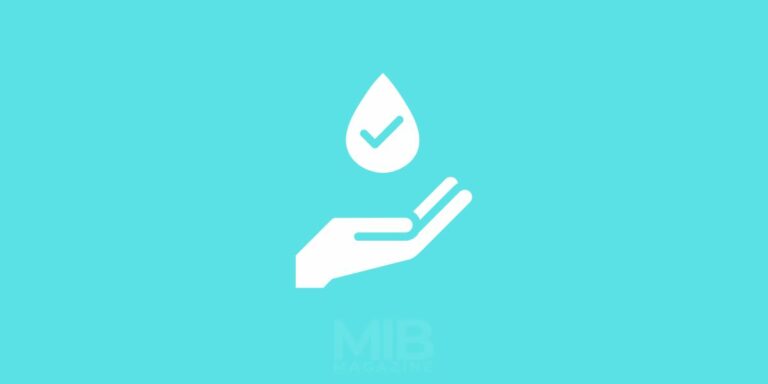How to Test a Startup Business Idea?

You might be stuck with a fantastic idea in your mind about a future business, but you are not sure whether it will work or not. It doesn’t matter whether it will fetch you a million dollars or not, but you have a business, but to be 100 percent sure about it. First of all, let us tell you that there is no guarantee in the world that your business will work or not. However, you can test your startup idea and figure out whether your idea is viable or not and whether you can take it forward.
So, this article is all about testing the fantastic-ness of your business idea – whether it will generate the requisite level of interest in the minds of other people and whether it can fetch you the desired returns or not. We have a complete guide of sequential steps on how you can do this. You might feel some of the steps are unnecessary but don’t worry; we have the reason you should be implementing those steps and determining the feasibility of your business idea.
Let us look at the testing steps below.
1. Clear out your mind by dumping all the business ideas.
Our mind hosts more than 80,000 thoughts a day, and we know that entrepreneurs must be surpassing this number. Even if you are a prospective business owner, you could be experiencing at least a thousand ideas in a year, some of which you might not have maintained any track. But it is our strong suggestion to record all these ideas and make a list of the same.
Some ideas just swoop in mind, and you will say to yourself, “Hey, this one is silly. It will never happen.” Well, it is okay to give a hearty laugh, but if you are sure about the silliest idea you have, you can have it on the list. So, when you have a list of at least three to ten business ideas, you should be confident that you are excellent at conceiving really good business ideas. So, pat your back and move to the next step below.
2. Don’t call it an idea. Call it by a good name.
If you have people in your life, do you call them ‘a person’ or by name? Of course, valuing your business ideas is vital as you do not want them to stick to the paper but take shape in real life. So, when you have a list of potentially good ideas for your new startup, it is your job to assign it a nice name. It could be something classy or funky, depending on your tastes. Remember, this is the time when the creative spirit kicks in, and you feel amazing with the business ideas you have. Maybe you will get more ideas about your proposed products and services, but press the mind’s brakes as this is not the time to decide everything.
Give names to your business ideas on the list, and this will make the following steps easy and convenient.
3. Make your idea visible on digital mediums.
These steps might make you look silly but you do not have an actual product or service, but you have the digital craze going on. You are not doing anything wrong. You are simply testing your business idea. Remember the way you send a test mail to everyone when you open a new email address on any platform. If you take an effort to test your email address, it is your duty to put considerable effort (and some money, too) into testing your business idea.
So, don’t think you are wasting time and energy, but utilizing it well for one of the important steps of startup foundation – testing the business idea. If you skip this step to cut costs, you will never know, but you will be going through a lot of chaos in the future and will go through confidence issues. Hence, be confident with your final business idea by putting it into the testing phase and executing the following steps.
- Get a domain name – Getting a domain name for business ensures that you trust your idea and want to make it visible online. It is not the website but the domain name that is essential for a business idea to kick in. Once you seek a proper domain name, you do not have to worry whether it will be available in the future or not. The domain name is secured for you, and so is your interest in the idea.
- Create a landing page – You do not need a full-fledged website displaying your products and services for the customers to develop interest. A landing page is sufficient. For all those who do not know about landing pages, they are a part of the website but not displayed as the main website. It is used to display the products and services you want to sell and can be easily connected during online advertising. It is easy to create landing pages on WordPress. If you do not have the expertise or wish to save on time, you can hire a freelancer and get the best one done in lesser time.
4. Develop an emotional connection using a logo and a brand image.
Even if businesses are commercial in nature and should be free from emotions, we cannot ignore the importance of emotional connection. It is the customer’s attention and feelings that we grab as we sell products and services. And for that, you need to invest in some graphics to enhance the visual appearance of your proposed business brand.
Create a logo; you don’t have to spend much on a logo. It takes some minutes to use an online logo maker and create one. Or you can even hire a graphic designer from a freelancing platform and assign the logo-creation job to them. If you are more interested, you can create a brochure or a flyer and take the next step. It is okay to be a little emotional at this stage as you are required to attract your customers to your products and services.
5. Describe your business idea.
Hey, we have the logo and the landing page ready; now what is next? Of course, the idea for a proposed product or service. This is the stage when you will describe the idea. You will be confused about how you can present the business idea, but we have two important pointers here.
- What does your business do? – For example, you thought of developing an app. What does this app do? What are the primary purpose and additional benefits of using this app?
- How does the business solve people’s problems? Remember, earning profit is not your motive. You should be able to resolve people’s problems, only then will they be interested in your products or services. For example, if your valuable app helps people order food late at night and when they travel in trains, you need to make them understand how these food problems are resolved with your app.
Your business idea should meet people’s expectations and demands. Only then can you call it viable. So, define your idea in the above two steps clearly.
6. Promote your business idea.
We are in the last stage of business idea testing, and it is important to let others know about your business. Since your landing page is ready, you don’t have to worry about it. Now, share your landing page using digital advertising mediums such as Google Ads, Facebook Ads, Instagram, and other platforms. You might think it is not necessary, but it provides you with different metrics to measure the viability of your business idea.
When you execute all the above steps, you develop an interest in the minds of the customers. You do not tell them to buy your product or service directly, but you inform them about the same and ask about their interest level in it. If they are interested in your product or service, they will fill in the contact form with their email addresses and/or contact numbers. So, when you launch your business, you can contact these customers who have a deep level of interest in your business.
7. How do you measure the feasibility of your business idea?
Generally, there are three criteria based on- which you can do this:
- Email addresses – as we mentioned earlier, the email addresses you collect are not random ones but the ones who are interested in your product or service idea.
- CTR – Click-through rate – this is the barometer upon which you can measure the number of people who viewed your page. These customers might not have entered the details, but they have surely had an interest in viewing your ad.
- CPC – Cost per click – this is the amount of money you spend on the number of clicks by the visitors.
8. Budget
Well, you might think it is expensive to test a particular business idea, but it is not. If you don’t do it, you might be spending money on a business that does not generate interest in the minds of viewers. So, it is important to invest money in the testing phase and know more about the viability of your idea.
You can get the logo free with the help of an online tool. But you will have to purchase a domain name and the landing page details. Moreover, you will have to hire a freelancer if you want a concrete logo for yourself. The budget could be between INR 2000-5000 or more, depending upon your interest level. For online advertising, you can spend INR2500-3500 a month. You can even decide how much you want to spend on running ads daily. Don’t worry; it won’t cost you a bomb.
Conclusively, testing a startup idea is inevitable, and you ought to follow the steps given below. We are sure all the money you spend will be worth it viewing the results.
FAQs
Researching your idea is essential for determining its potential success. It’s important to research the market to understand the competitive landscape, potential customer base, and any potential regulatory issues. You should also research your own capabilities to determine if your idea is feasible.
To determine if your startup idea is worth pursuing, you should consider your target market, competitive environment, and resources needed to bring the idea to fruition. You should also assess the potential return on investment and if you have the skills and resources necessary to make the idea successful.
Before launching your startup, you should conduct market research to validate the idea and test it on a small scale. You can also use online tools and resources to test the concept and create a prototype. Additionally, you can get feedback from potential customers and industry experts.
Testing a startup business idea can be risky since it involves investing time, money, and resources. It’s important to be aware of potential risks and develop a plan to mitigate them. These risks can include legal issues, competition, and financial instability.
To protect your startup idea, you should consider filing for a patent or trademark if applicable. You should also keep your idea confidential and use non-disclosure agreements when discussing the concept with others.
Testing a startup business idea can provide valuable insight into the potential success of the concept. It can also help you refine your idea and identify any potential risks and challenges before investing large amounts of time and money.
There are a variety of resources available to test your startup idea. These include online market research tools, customer feedback surveys, and resources for creating a prototype. Additionally, you can seek advice and feedback from industry experts and mentors.






